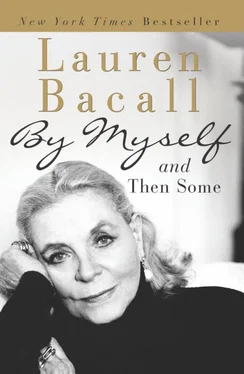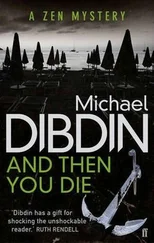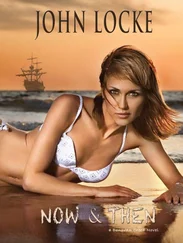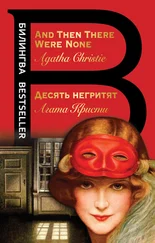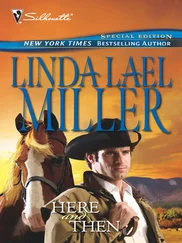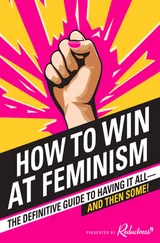One night at Tony’s, Timothy said he had told Nicky de Gunzburg about me. Perhaps I could be used in photographic modeling. Tim thought Nicky might be there that evening, so I should be prepared. Wouldn’t that be wonderful? I thought. Not a nine-to-five job, but I’d make enough money and still be free to pound those theatrical pavements. As promised, Nicky de Gunzburg did turn up – a dapper, friendly, charming man – a baron! Another first for me.
He came over to the table and Tim introduced me – ‘This is the girl I’ve been talking to you about.’ Nicky (he wasn’t Nicky to me for a long time) said, ‘If you will come to my office tomorrow, I’ll send you over to one of our fashion editors to see if she can use you.’ I thanked him fervently (I did everything fervently) and said I’d see him the following day.
The following day I was just as nervous as if I were trying out for a play. Nicky told me the fashion editor’s name was Diana Vreeland – he’d mentioned me to her and we would go over to her office. A secretary said we could go in to where an extraordinary-looking woman sat at a desk covered with papers, photographs, boxes with bits and pieces of jewelry, scarves. She was very thin. Black hair combed straight back, turned under and held in place by a black net snood with a flat band on top. She was wearing a black skirt, a black sweater, and black ankle boots. She had white skin, brown eyes, red mouth, long nose, pink cheeks, lovely teeth, long fingernails painted dark red. Definitely an original. Very direct in manner and speech. She stood up, shook my hand, looked at my face – with her hand under my chin, turned it to the right and to the left. She saw I was awkward, not made up, far from the perfect model. She asked me what I’d done before, I told her – it was practically nothing and some time back. She said, ‘I’d like Louise Dahl-Wolfe to see you. We’re having a sitting tomorrow – could you come to the studio? It won’t take long.’ I said, ‘Of course I could.’ I was scared to death. The efficiency and matter-of-factness of the whole magazine operation and particularly of Mrs Vreeland were intimidating. I’d never been in the offices of so grand and powerful a fashion magazine as Harper’s Bazaar . I hadn’t a clue what Mrs Vreeland’s reaction to me had been. I knew I felt like a gawk – never thought I was a beauty, so I never really expected too much. I just hoped.
The next day I went to the appointed studio at the appointed time. There was a sort of dressing room, rather like the theatre – make-up lights around mirrors, canvas chairs, clothes on hangers, and boxes of accessories, all of which, I was to learn, were permanent fixtures at fashion sittings. The studio was a large room with lights, backings – and Dahl-Wolfe and her cameras. She was a rather short, stocky woman whose sandy hair was pulled up tight in a bun or braid on the top of her head. A friendly, open woman who was number one in her profession. Diana Vreeland was there and brought me in to meet her. Dahl-Wolfe said, ‘Let’s take a few shots first.’ She wanted to see what her camera could catch. I had no makeup on, but she said this wasn’t a serious sitting, it was just for her, really. She had me stand in the middle of the studio floor. I was a basket case of nerves. She had her Rolleiflex camera around her neck – that was her favorite camera – and another one on a tripod. She put the lights where she wanted them and through my twitching said, ‘Look left… look right… turn to the right and look over your shoulder… left profile.’ She asked me about myself, snapping away very quickly as she talked. There was no real posing, she just caught me as I fell and as she wanted it. It was much less painful than any other modeling I had done. I was still shaking – I couldn’t seem to find a way out of that. The only thing that ever helped was for me to talk – to make jokes – and to not stand still for too long. I didn’t dare go too far, as I was a stranger in those parts and wasn’t sure what their reaction would be. But it was my nature to try to make people laugh or at least smile, and it eased my twitching mouth, made me feel more an actress, less a model.
After about half an hour Mrs Vreeland thanked me and asked me to leave my phone number. Did I work through an agency? Not anymore. ‘We’ll call you as soon as we go over our layouts.’ I made some stunning remark like ‘I hope the camera will still work after it’s looked at me.’ Knocking myself out of the box before anyone else did. I didn’t much like the idea of modeling, though it might be fun for a while, but I did like the two women – even though they’d frightened me a little.
A couple of days later Diana Vreeland called and asked if I could come in the next Tuesday to pose. I had the weekend ahead of me – to rest up and talk about this until I drove everyone mad. My mother always said, ‘The trouble with you is you have a one-track mind. When you make up your mind about one thing, you erase everything else.’ But Tuesday came at last and off I went. Mrs Wolfe was there – and Mrs Vreeland. She put a suit on me, told me which make-up to use – but very little. ‘Betty, I don’t want to change your look.’ (Whatever that was.) When all was done she put a scarf round my neck – knew just how to tie it, a little off-center – and I was ready for my first sitting for Harper’s Bazaar . From that day on, my life would take a different course.
It was fun working with those two ladies. Diana would be there through the sitting, making sure the clothes were on straight, that the hair was the way she wanted it. Louise would snap away. They worked perfectly together.
I’d say almost anything that came into my head – about acting, the theatre, my being an usher. A lot of it made them laugh – though all through it, Dahl-Wolfe never looked up from the camera, never really took her mind off what she was doing. A total professional. I asked what issue the pictures might be in – they thought probably January. Almost two months ahead – that was the way those magazines worked.
The pictures were okay, I was told. Good enough to use. Then things began to move. I posed in glorious apartments – one was Helena Rubinstein’s; on a bathtub in a one-piece jersey undergarment looking over my shoulder; on a sofa in a jumpsuit (a jumpsuit in 1942!); sewing; standing by a window in a slip; wearing hats in an antique shop; in a printer’s shop. I loved being with Louise and Diana – felt comfortable – and I was getting paid ten dollars an hour.
Once I was sent to Hoyningen-Huené, one of the great fashion photographers of the day. His work methods could not have been more different from Dahl-Wolfe’s. I was standing in a tailored suit; he posed me like a statue. ‘Put your left foot forward a bit – turn the toe out – shoulders straight and out front – head down, a little to the right. Hold very still.’ Agony, every part of my body was going in a different direction. Whenever he said, ‘Hold still,’ I started to shake. I was a disaster. He was not pleased. I was not pleased. Not pleased? I was suffering. I hated him. The tenser I became, the more strained my facial expression. ‘I’ll never work again – I couldn’t be a model, not this kind of model.’ I was not a mannequin. Somehow the sitting came to a close. I doubted that Huené had got even one picture he could use. Certainly I’d never work for him again – wait till Diana Vreeland heard from him! I wanted to tell her first, but didn’t feel secure enough with her; I’d just have to wait and see what happened. Years later I met Georges Huené again at George Cukor’s house and reminded him of that day. He turned out to be a very pleasant man, and we laughed about my fright and my inability to cope. We could then – it was over for both of us.
Читать дальше
